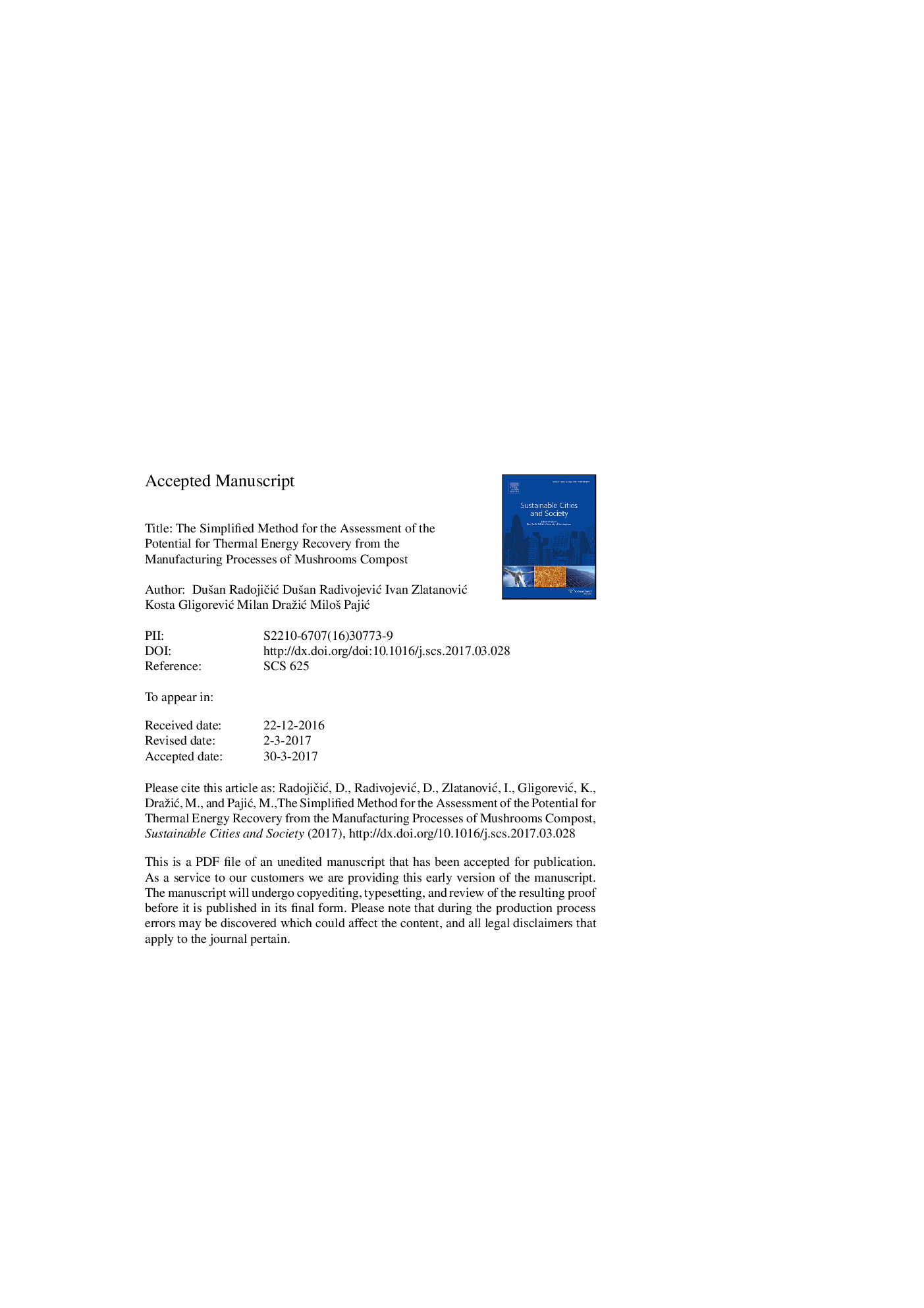| Article ID | Journal | Published Year | Pages | File Type |
|---|---|---|---|---|
| 4928015 | Sustainable Cities and Society | 2017 | 17 Pages |
Abstract
This study deals with the manufacturing process of compost production, followed by the release of large amounts of heat. The wheat straw and manure of broilers were the basic components of the raw mixture, monitored during the 80 h period. The simplified assessment method was developed along with suitable mathematical model. The potential for recovery of the heat released to the surroundings was evaluated indirectly based on compost temperature measurements during the one full production cycle. Temperature-time mathematical model was developed and used as time indicator for the analysis of distribution of energy that was generated in exothermic processes. The emissions of N (<1% dry basis) and C through CO2 (â¼3% dry basis) was neglected in mass balances. During composting treatment material temperatures were in range 80 ± 2 °C, making it a reliable heat source of constant temperature. The amount of total generated heat during the 80 h time period was calculated to be 1325 kJ·106, of which 76.4% was released to surroundings. The specific value of generated heat was 1.32 kJ gâ1 of raw mixture, of which 1.01 kJ gâ1 was available for recovery. The results pointed to the existence of significant amounts of released energy available for recovering.
Related Topics
Physical Sciences and Engineering
Energy
Renewable Energy, Sustainability and the Environment
Authors
DuÅ¡an RadojiÄiÄ, DuÅ¡an RadivojeviÄ, Ivan ZlatanoviÄ, Kosta GligoreviÄ, Milan DražiÄ, MiloÅ¡ PajiÄ,
